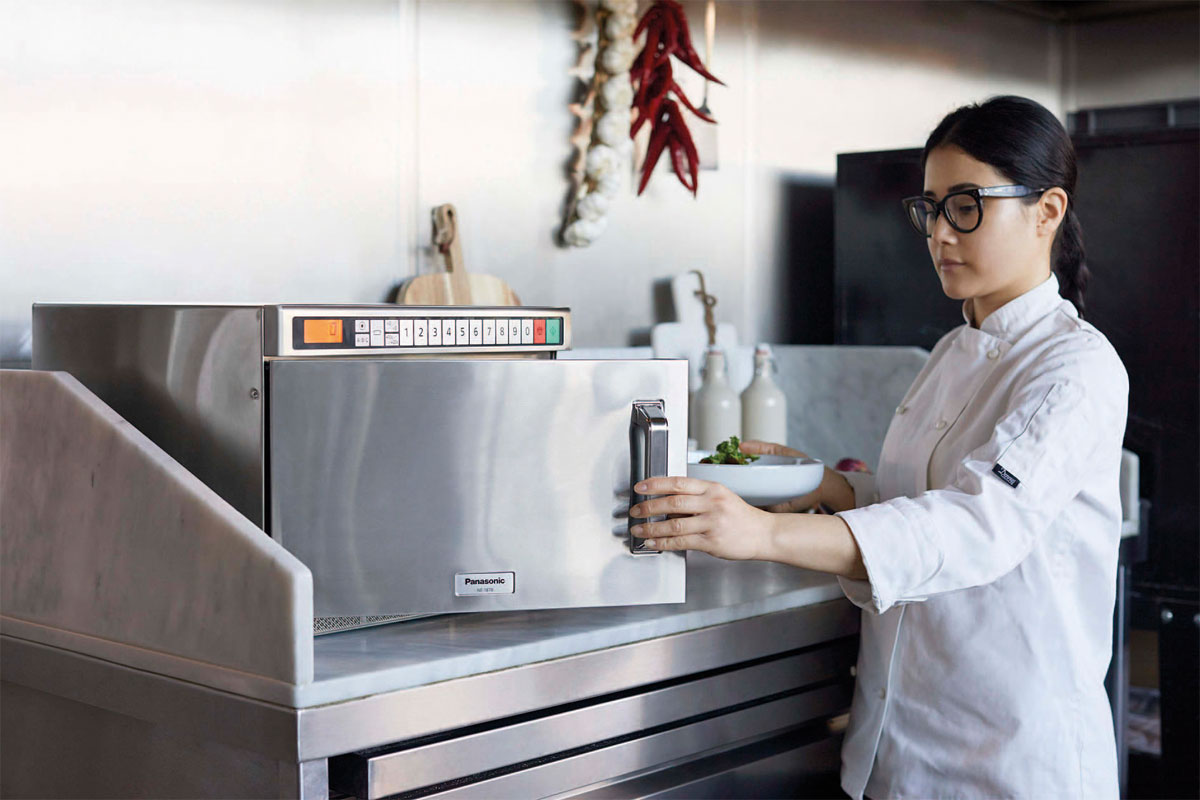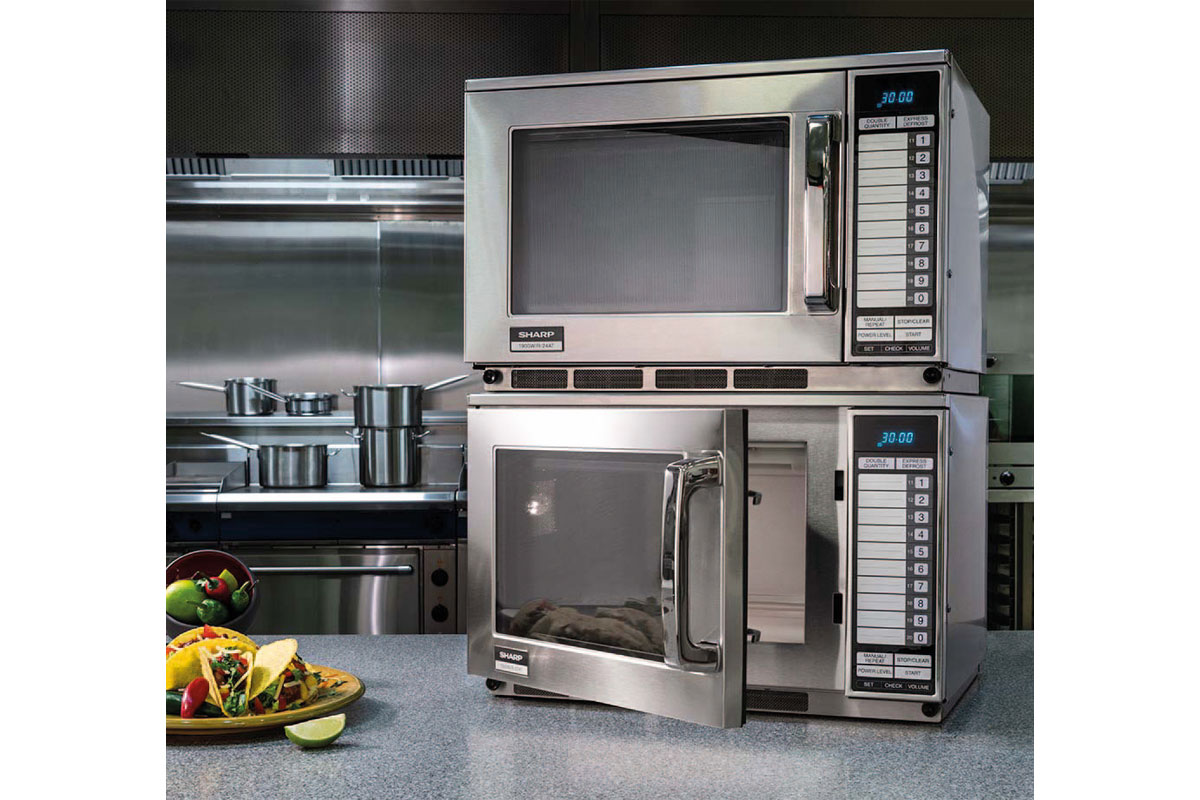Commercial microwaves are versatile appliances able to punch well above their weight

AS Scottish hospitality businesses look to emerge and recover from the pandemic, efficiency is likely to be a watchword for many operators.
In the kitchen, one of the factors impacting efficiency will be the ability to get the most out of any equipment.
And some chefs may be overlooking the versatility of one of the most well-known tools in the kitchen: the microwave.
Catering equipment suppliers said contemporary commercial microwaves are capable of carrying out a wide range of tasks, and may be more versatile than even some experienced chefs realise.
“When used to its full capacity, and not just to defrost and reheat, a commercial microwave can be a tremendously useful piece of equipment in any kitchen,” said Barnaby Sykes, head of category marketing at Panasonic UK.
“With changes in service and menus being constantly revised and simplified throughout the pandemic, we’ve seen a change in the way chefs use their microwaves to help prepare dishes quicker and serve customers faster, enabling a second sitting in some cases to compensate for reduced occupancy.”
Sykes said there have been many “creative uses” of microwaves in recent years, for purposes as diverse as cake-making, chocolate tempering, roasting spices and even disinfecting chopping boards.
Even within the more traditional uses, microwaves are suited to a broad range of applications, according to Duncan Vipas, head of sales at RH Hall.
He said with the right techniques there is no reason microwaves cannot be used to cook meat, poultry, fish or vegetables to perfection.
“Many of the techniques used in microwave cooking are the same as used in conventional cooking, but with a few minor adjustments,” said Vipas.
“There is a great deal of diversity of dishes that can be prepared quickly and easily from fresh ingredients and to get the most from a microwave the right education and budget should be provided.”
Vipas said that commercial microwaves are able to deliver “a diverse menu, without the need for increased manpower, expense or time” – which is certainly an argument for their efficiency.
Where standard commercial units are able to perform a range of functions, the options increase again in the case of combination microwaves, said suppliers.
Vipas said combination units “can be used in place of a grill or oven where space is limited, combining these traditional cooking methods with microwave speed for outstanding results – even when cooking foods such as pastries, pies and pizza”.
“Items such as pastry will become soggy if reheated in an ordinary microwave whereas using a combination microwave the crisp, golden brown and conventional finished result will be achieved in microwave time,” he said.
“For operations looking to introduce a simple food offering, the right microwave can help them create a ‘kitchen in a box’ with a small footprint and a minimal budget.”
And the technology continues to evolve, according to the Foodservice Equipment Association (FEA).
“The barcode microwave is undoubtedly a big step forward in food safety and ease of use,” said FEA chair, Stephen Hobbs.
“The microwave scans the barcode (or QR code) on the food packaging and automatically selects the appropriate programme.
“This system allows for a fully automated foodservice operation, working 24/7, all year round.
“It’s compatible with chilled, frozen and ambient foods and is, in theory, 100% error-proof. Programmes can be created and updated as required, to adapt to changes in menu.”
Ensuring businesses get the utmost from their commercial microwaves will rely on how the equipment is maintained.
Whatever the model, or how it is used by an outlet, it is essential any microwave is cleaned regularly.
“As with all kitchen equipment, clean your microwave, inside and out, regularly,” said Hobbs.
“One way to protect your investment is to buy a model that is compatible with an oven liner. These removable, washable protectors will help maximise the life of the machine.”
Suppliers agreed.
Sykes at Panasonic said regular cleaning will help to prolong a microwave’s lifespan as well as “ensure its effectiveness and reliability”.
He said: “Certain recurring breakdowns are preventable; burnt ceiling plates, cracked base plates and penetration by grease into working parts will not be covered by a manufacturer’s guarantee and the cost for repair will lie with the operator but a simple cleaning routine at the end of every service will help ensure your microwave will function throughout service.
“You should remove the air filters daily and wash them, and if your machine has an easily removed ceiling plate, take that out and wash it too.”
And Vipas at RH Hall argued that, with regular cleaning and an annual service, “there is absolutely no reason why your commercial microwave oven shouldn’t last between three to five years and even more”.
He advised regularly cleaning the microwave’s oven cavity and inner door in order to avoid “cavity burn ups”.
“This measure will also help the consistency and speed of reheat/cook times,” said Vipas.
Suppliers also stressed the importance of buying the right piece of kit in the first place, with Sykes at Panasonic saying cheaper models often won’t have the build quality or lifespan of the better-known brands.
“Cheap microwaves are cheap for a reason,” he said.
“Weaker motors and door hinges, poor design and inefficient heat distribution all lead to a lower purchase price, and ultimately poor performance.”
Vipas at RH Hall agreed.
He said that recognised brands are often more thoroughly tested, and have longer warranties, than cheaper options.
“The testing, safety and product back-up that are offered by the leading brand names are often not available with a cheap import,” said Vipas.
“Always check the warranty offering available.
“A good quality commercial machine should come with a minimum of one year on-site parts and labour warranty – with many of the leading manufacturers now offering up to three years.
“Look particularly at the cover offered on the magnetron, which is the heart of any commercial microwave.”




















